Is your kitchen layout making daily tasks more challenging than they should be? In this post, readers will explore innovative kitchen layout design ideas that focus on functionality and efficiency. Topics include maximizing space with open kitchen layouts, essential pantry design layouts, and tips for effective shelf placement. By addressing common pain points, such as poor floor plans and cluttered spaces, this content will provide practical solutions to create a well-organized cooking area, complete with an effective stove setup and convenient closet integration. Enhance your kitchen’s efficiency today!
Maximizing Space With Open Kitchen Layouts
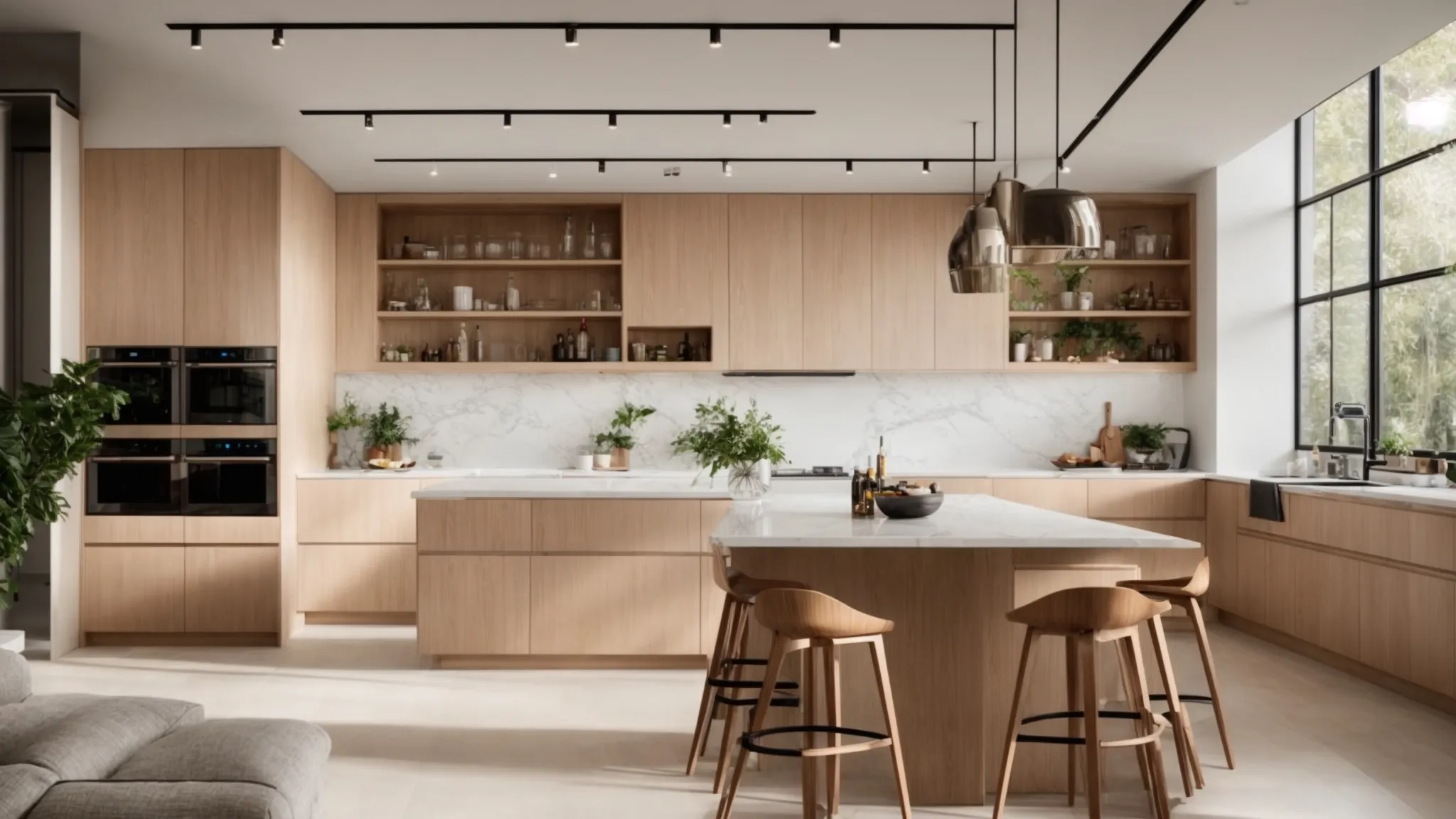
An open concept kitchen design offers numerous benefits, such as increased natural light and improved flow between spaces. Ideal layouts for small kitchens include U-shaped kitchen ideas that maximize efficiency while integrating kitchen cabinets and bar stools for additional seating. This section explores these elements and how they contribute to functional and appealing kitchen environments.
Benefits of an Open Concept Design
An open concept design enhances the functionality of kitchen spaces by providing a seamless flow between the kitchen and adjacent areas, making it easier for users to engage with family and guests while cooking. This layout optimalizes the kitchen work triangle, allowing easy movement between the stove, sink, and refrigerator, which is particularly beneficial for small kitchen design ideas where space is limited. Furthermore, incorporating elements like a well-organized pantry and utilizing the floor space effectively can transform an efficiently designed kitchen into a welcoming hub for culinary activities and social interactions.
Ideal Layouts for Small Kitchens
For small kitchens, ideal layouts should prioritize efficient food storage and functionality while maintaining a welcoming atmosphere. A farmhouse-style design, characterized by open shelving and natural materials, can enhance the visual appeal while creating easy access to essential items. Positioning the sink near the dining room ensures convenient cleanup and encourages interaction, making the kitchen a central hub for family gatherings.
Trends in Kitchen Design for Functionality

Modern kitchen design trends focus on enhancing functionality through smart solutions. Incorporating multi-functional furniture can optimize space in various layouts, including galley kitchen designs. Utilizing vertical space for storage maximizes cabinetry efficiency, while effective lighting enhances the overall atmosphere. These elements collectively contribute to creating an efficient, inviting cooking environment tailored to contemporary living.
Incorporating Multi-Functional Furniture
Incorporating multi-functional furniture is a vital strategy for maximizing space, especially in small galley kitchen designs. For a successful renovation, consider items like extendable dining tables or movable islands that can serve as both prep areas and meal serving stations. These versatile pieces not only create more energy-efficient workflows but also enhance the overall functionality of the kitchen, proving essential when learning how to redesign a kitchen effectively.
Utilizing Vertical Space for Storage
Utilizing vertical space in kitchen designs offers practical solutions for storage, especially in areas with limited square footage, such as galley kitchens. Creative kitchen cabinet layout ideas can include shelves that extend to the ceiling, providing extra room for small appliances and frequently used cooking tools. This approach not only enhances accessibility but also contributes to a more organized, efficient cooking environment, making it easier to maintain a clean and functional space.
Exploring Different Kitchen Layout Styles
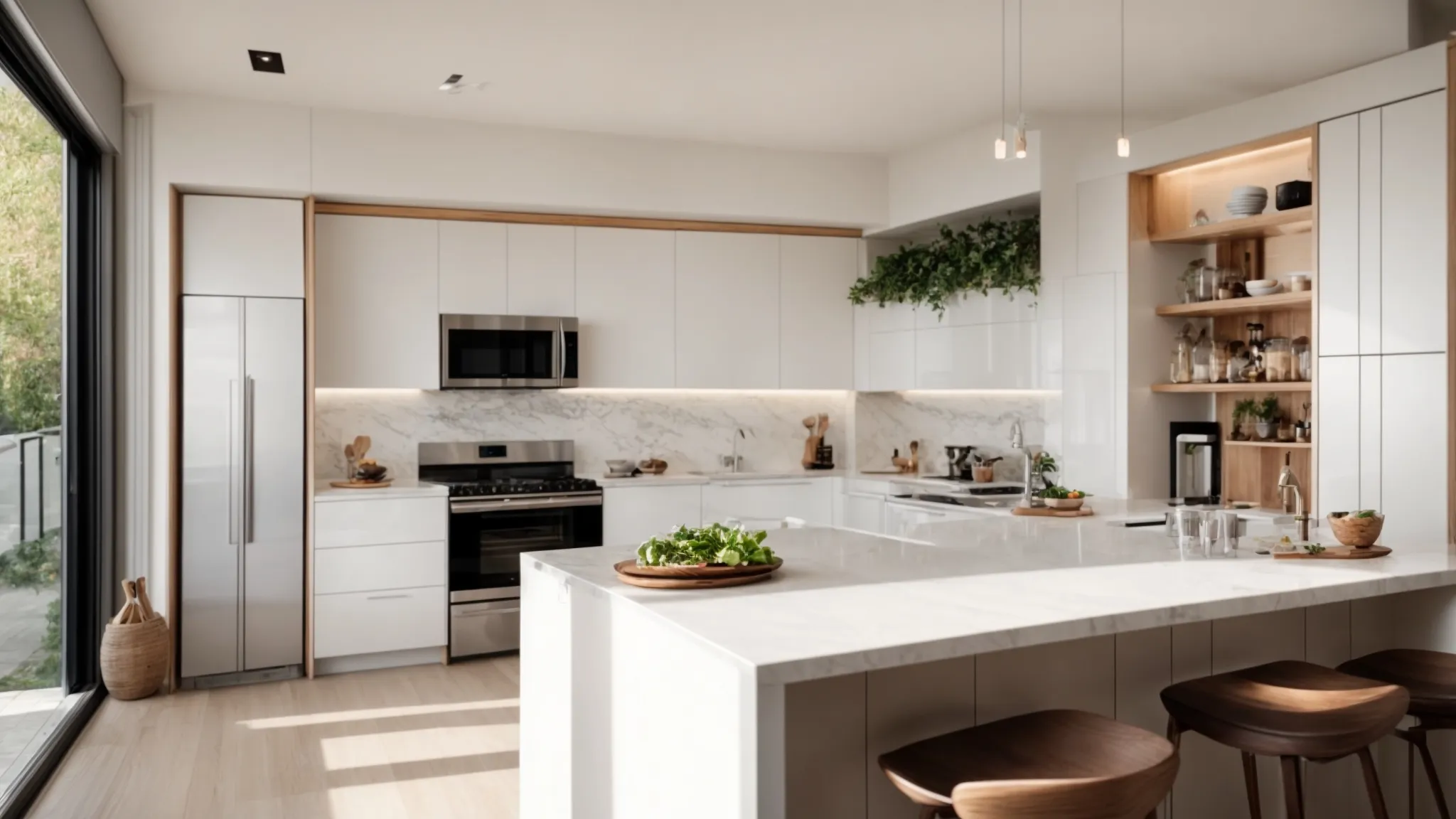
L-shaped kitchen ideas offer a versatile layout that maximizes corner space, enhancing convenience for various kitchen activities. Meanwhile, galley kitchens are known for their efficiency, minimizing mess and optimizing the kitchen work triangle, making movements fluid between the refrigerator, stove, and dishwasher. This section will explore the characteristics of L-shaped designs and the advantages of galley kitchens, providing practical insights for effective interior design.
Characteristics of L-Shape Kitchens
L-shaped kitchens are designed to optimize corner space while providing ample room for movement and functionality. This layout often incorporates materials such as wood for cabinets, creating a warm and inviting atmosphere. For those exploring kitchen design ideas for small spaces, the L-shape successfully combines efficiency with style, allowing for essential features like linen storage and prep areas without compromising the overall flow of the room.
Advantages of Galley Kitchens
Galley kitchens offer numerous advantages for those looking to optimize their cooking space, especially in very small galley kitchen ideas. This layout fosters an efficient workflow as the design minimizes the distance between essential appliances, such as the oven and refrigerator, facilitating seamless meal preparation. Incorporating features like a peninsula can provide extra surface area for tasks such as cutting and plating, while strategically placed drawers can enhance storage and accessibility, making the kitchen not only functional but also user-friendly.
Designing a Kitchen Island for Function and Style
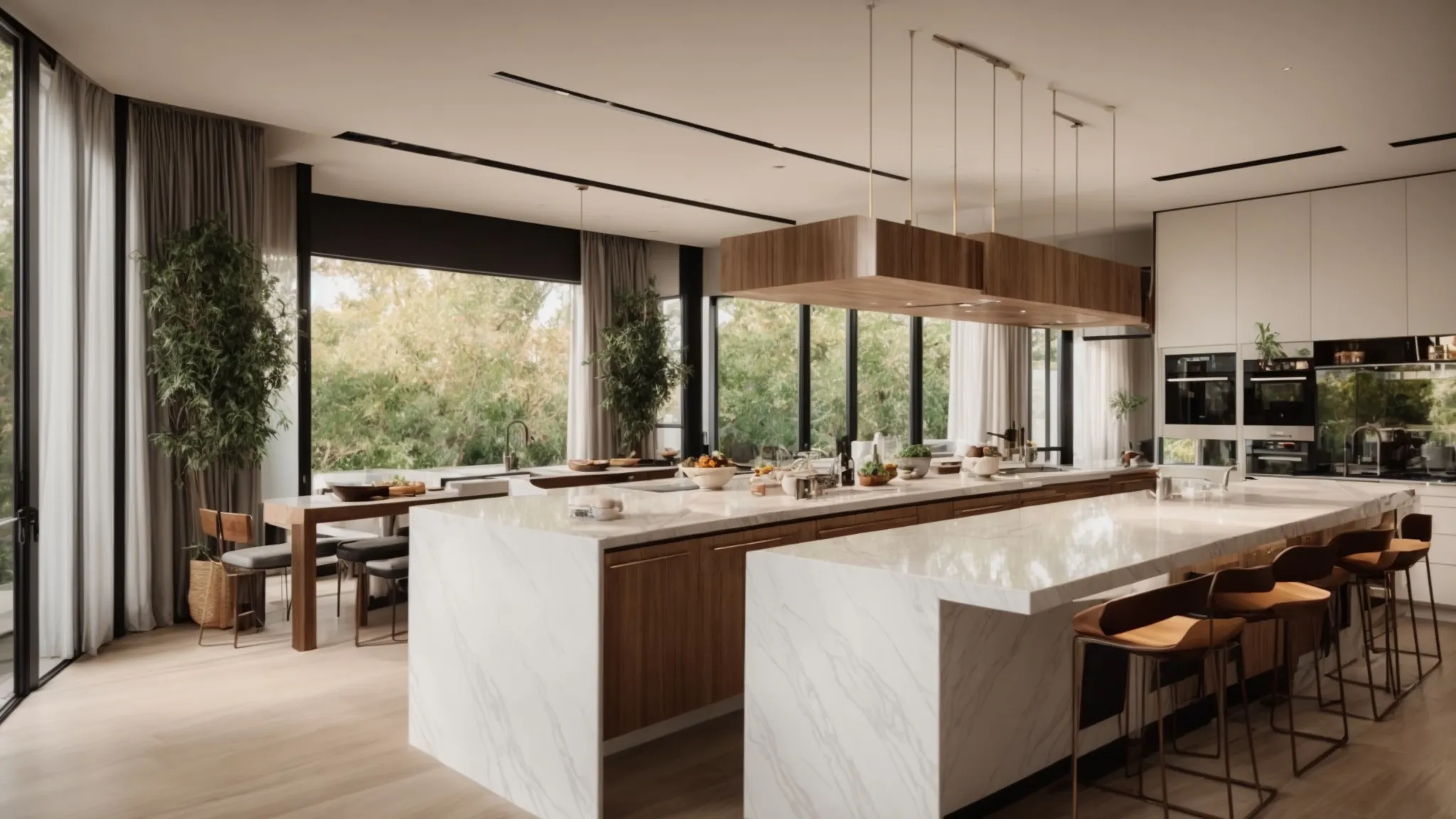
Selecting the right size and shape for a kitchen island is essential for creating a functional space that complements the overall layout. Consideration of countertop materials can enhance both aesthetics and practicality. Integrating seating into the kitchen island fosters a welcoming atmosphere while ensuring smooth traffic flow, allowing family and guests to engage comfortably during meal preparation and gatherings.
Selecting the Right Size and Shape
Selecting the right size and shape for a kitchen island is a critical aspect of designing a functional space. The island should complement the overall layout, providing ample workspace without overwhelming the kitchen area. For smaller kitchens, a compact rectangular island can serve as a practical prep area, while larger spaces may benefit from a more expansive, multi-tiered design that incorporates seating and storage options, facilitating interaction and enhancing efficiency during meal preparation.
Integrating Seating Into Your Kitchen Island
Integrating seating into the kitchen island not only enhances functionality but also fosters a welcoming environment for guests and family during meal preparation. Choosing bar stools or counter-height chairs that fit comfortably under the countertop maximizes space efficiency while providing a casual dining option. This approach encourages interaction, allowing individuals to share conversations and experiences, creating a more engaging atmosphere in the heart of the home:
- Bar stools or counter-height chairs for comfort
- Maximized space efficiency while maintaining flow
- Encouraged interaction during meal prep
Creating Zones in Your Kitchen Layout
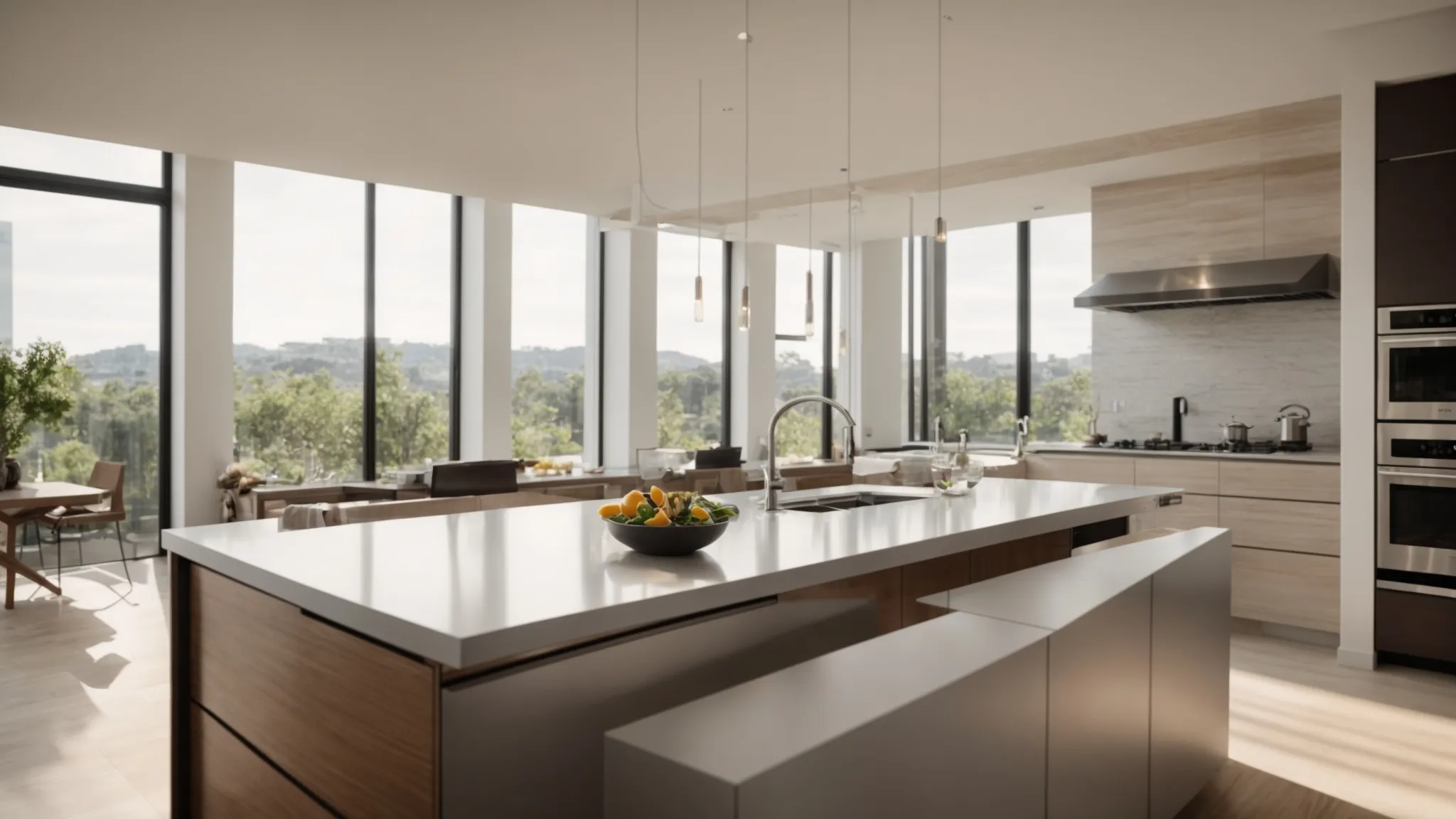
Creating distinct cooking, cleaning, and prep areas is essential for an efficient kitchen layout. This section highlights how organized zones enhance workflow, making meal preparation and cleanup more effective. By defining these areas, kitchens become more functional, accommodating both culinary tasks and social interactions seamlessly.
Defining Cooking, Cleaning, and Prep Areas
Defining specific zones within the kitchen, such as cooking, cleaning, and prep areas, is essential for optimizing workflow and functionality. A well-planned kitchen layout ensures that each zone is strategically positioned, allowing easy access to necessary tools and ingredients. For instance, placing the sink, stovetop, and countertop in close proximity enhances the efficiency of meal preparation and cleanup activities:
Organizing the Space for Efficient Workflow
Organizing the kitchen space effectively enhances workflow by ensuring that each zone—cooking, cleaning, and prep—is well-defined and strategically placed. For instance, positioning the sink near the stovetop facilitates quick meal preparation and cleanup, reducing unnecessary movement. By creating a logical layout that prioritizes accessibility to tools and ingredients, the kitchen becomes a more efficient and enjoyable environment for cooking and social interactions.
Enhancing Light and Ambiance in Kitchen Designs
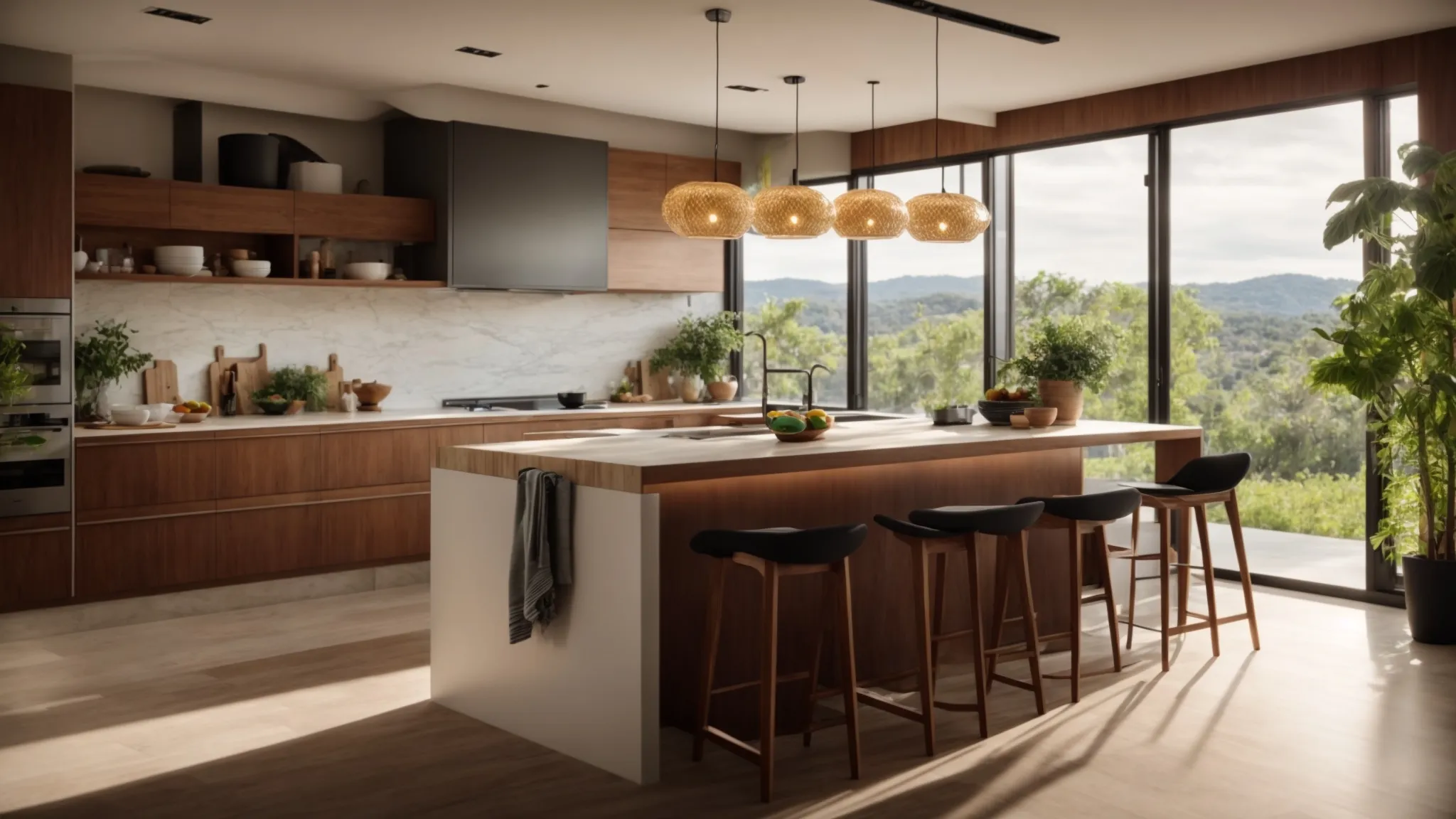
Choosing the right lighting fixtures plays a crucial role in enhancing the overall ambiance of kitchen designs. Proper lighting not only improves visibility but also sets the mood for the space. In addition, utilizing color and materials can significantly brighten the kitchen, creating an inviting atmosphere. These elements will be explored further, providing valuable insights for achieving a functional and appealing kitchen layout.
Choosing the Right Lighting Fixtures
Choosing the right lighting fixtures is fundamental in creating a kitchen layout that balances functionality and aesthetic appeal. Task lighting, such as under-cabinet lights, helps illuminate work areas for food preparation, while ambient lighting enhances the overall atmosphere of the space. By strategically selecting fixtures that blend style and purpose, homeowners can effectively brighten their kitchen, making it a more inviting area for both cooking and gathering.
Using Color and Materials to Brighten the Space
Using color and materials strategically can significantly enhance the brightness and overall ambiance of a kitchen space. Light colors, such as soft whites or pale yellows, help reflect natural sunlight, creating a more open and airy environment. Additionally, incorporating materials like glossy tiles or stainless steel can amplify brightness while adding a modern touch, proving essential when designing functional kitchen layouts that cater to both aesthetics and practicality.
Conclusion
Effective kitchen layout design is essential for creating functional spaces that enhance both cooking and social interactions. Prioritizing an open concept, utilizing multi-functional furniture, and defining distinct zones streamline workflows while optimizing space. Incorporating thoughtful lighting and bright materials elevates the overall ambiance, making the kitchen a welcoming and efficient hub. By embracing these design principles, homeowners can transform their kitchens into versatile areas that cater to their culinary needs and lifestyle.